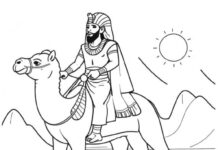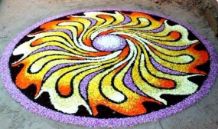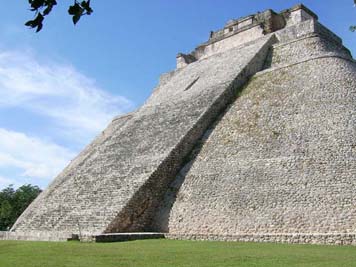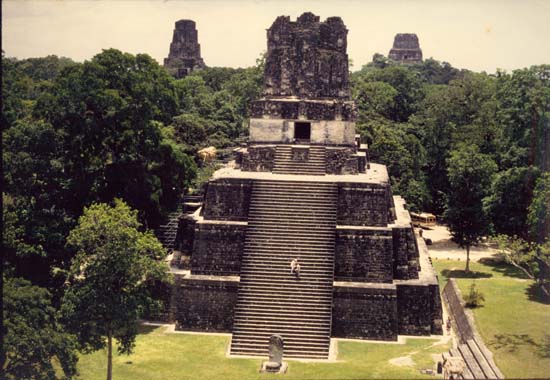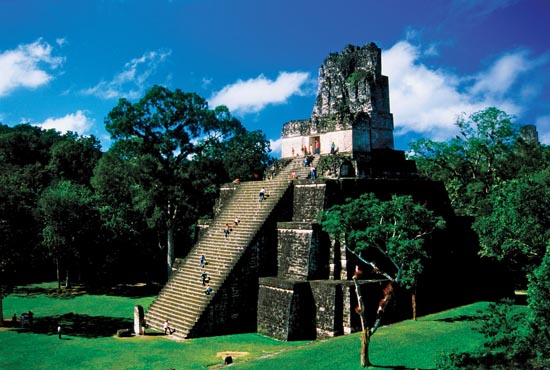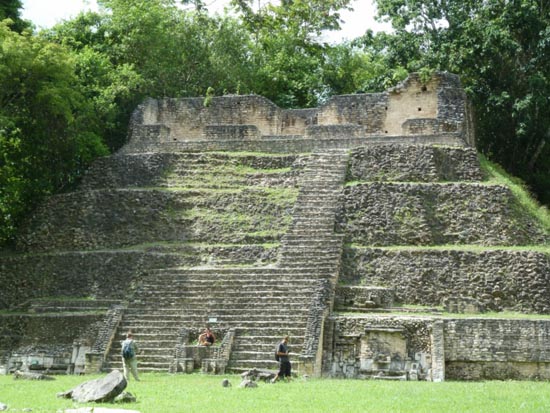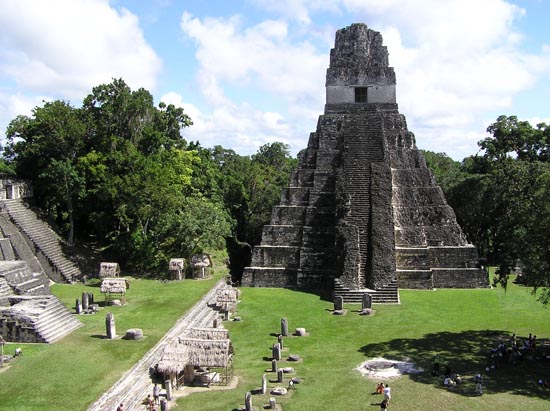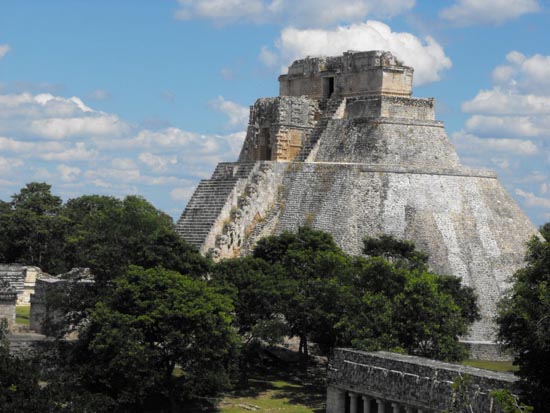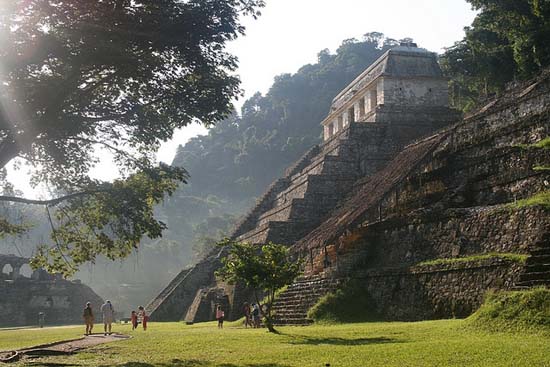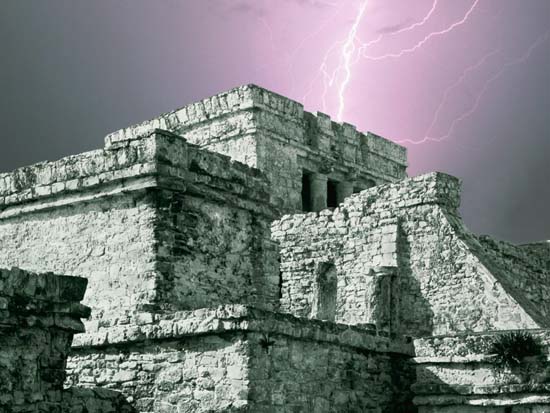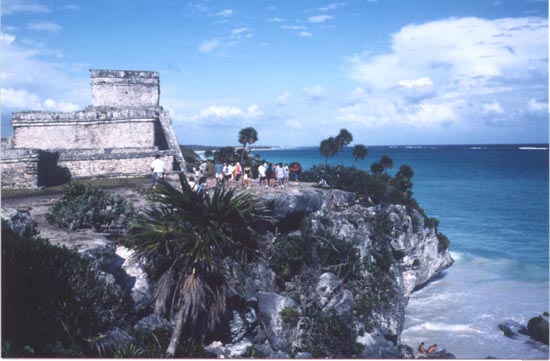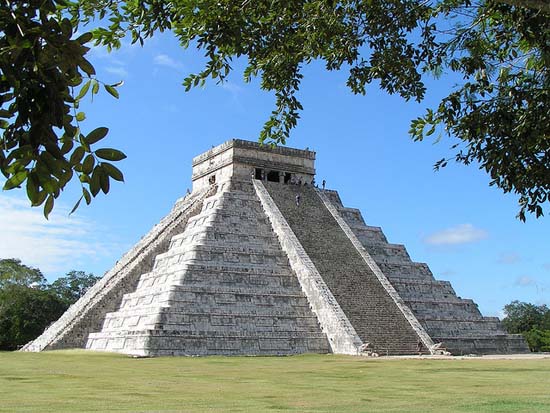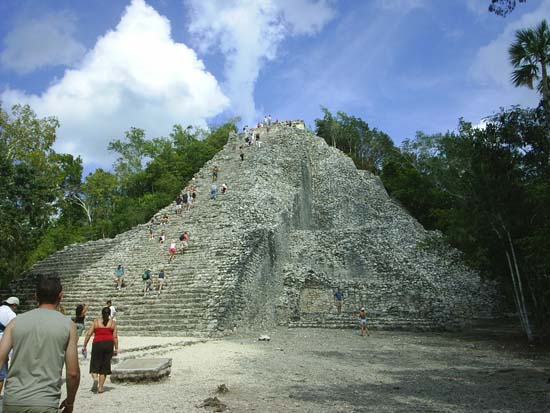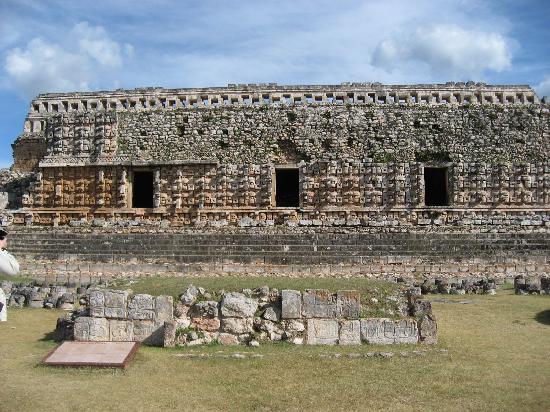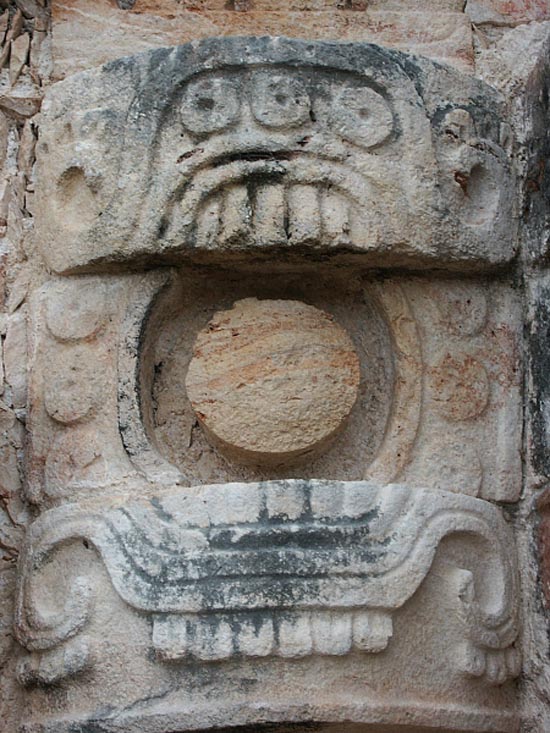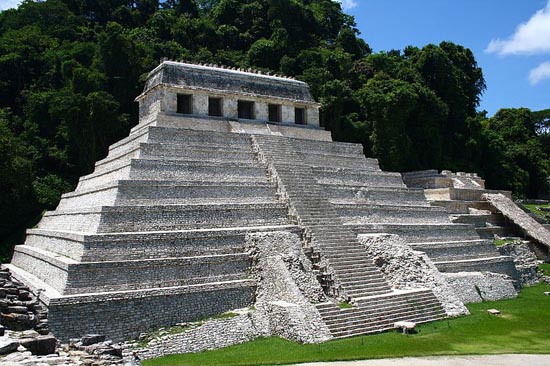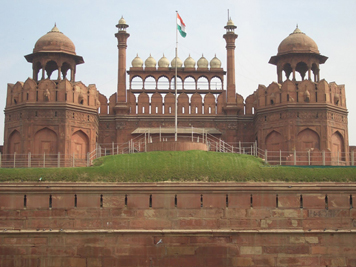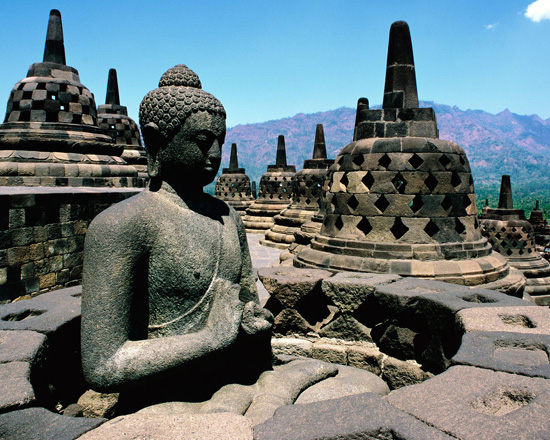Mayan history is unique and diverse. Mayan history began in BC 2600 in the Yucatan region the period from about 300 A.D. to 900 A.D., known as the Classic Period, was its heyday. During that time, the Maya developed a complex understanding of astronomy. Making rapid progress in the fields of astronomy, hieroglyphic writing, and calendrical systems. They developed existing ideas and inventions of the prior Olmec civilization, which were integral to their religious rituals. They are also known for the practice of human sacrifice, which was a means of appeasing and nourishing the gods. The Maya civilization was one of the great Pre-Colombian civilizations, a diverse group of indigenous people who lived and once consisted of over 40 cities extended throughout the northern Central American region, including the present-day nations of almost all Guatemala, parts of Belize, El Salvador, southern Mexico states of Veracruz, Yucatán, Campeche, Tabasco, and Chiapas and western Honduras. Had one of the most sophisticated and complex civilizations in the Western Hemisphere. The Mayan pyramids and their temples were important because of their ritual value. Many of these Mayan ruins have been designated World Heritage Sites.
During the Classic period (250–900 AD) most Mayan city states reached their peak of urbanism and large-scale construction, the Maya were responsible for a number of remarkable scientific achievements–in astronomy, agriculture, engineering and communications.. The most notable monuments from this period are the ancient Mayan temples that were built in almost every important Maya city.
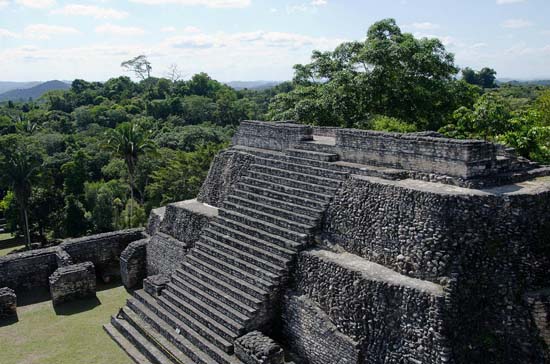
For reasons that are still unknown, most of the Maya centers and great structures went into decline during later centuries and were eventually abandoned leaving only the Mayan ruins. and the exact purposes of the massive and elaborate buildings, continue to remain trapped in the past. But There are several possible reasons for their downfall including soil exhaustion, water loss and erosion. Other possibilities include catastrophes such as Destruction from earthquakes is evident in some Mayan centers, diseases and invasions by other surrounding people and cultures.
There are many examples of these temples all around the Mayan areas.
Caracol-Belize:
Siting high on the Vaca Plateau, 500 meters (1650 ft) above sea level, Caracol is the largest Maya site in Belize. contains pyramids, tombs and Mayan art. It was once one of the largest ancient Maya cities, covering some 168 square kilometers (65 mi²). At it’s peak around 650 AD ,lies in ruins in western Belize near Guatemala. Hidden in the jungle until 1938, it had an estimated population of about 150,000, more than twice as many people as Belize City has today. The largest pyramid in Caracol is Canaa (Sky Place), at 43 meters (143 ft) it is still the tallest man-made structure in all of Belize.
Tikal-Guatemala:
is one of the largest archaeological sites and urban centres of the pre-Columbian Maya civilization. It is located in the archaeological region of the Petén Basin in Guatemala.Tikal is best known for its towering Temple of the Two-Headed Snake. Tikal has been declared a Heritage of Humanity by UNESCO.
Uxmal-Mexico:
The late-Classic Maya site of Uxmal. It has a long flight of stairs which goes up one side and leads to a smaller temple on the top. was built before the 10th century AD and is one of the most complex and harmonious expressions of Puuc architecture.
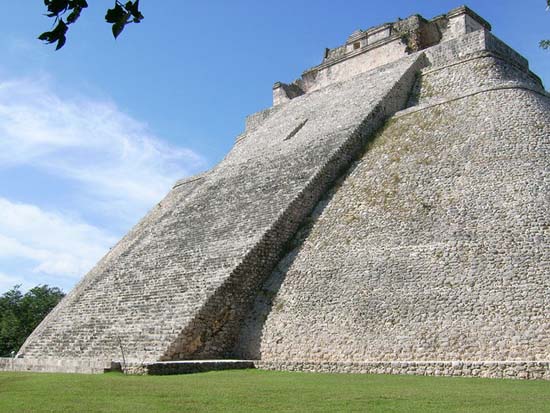
Sergio Kasusky:
Uxmal, meaning “built three times” in the Mayan language, referring to the construction of its highest structure, the Pyramid of the Magician. It is one of the best preserved Pre-Columbian sites in Mexico. The most recognizable and tallest structure at 115 feet is the Pyramid of the Magician. The Maya would often build a new temple over an existing one, and in this case five stages of construction have actually been found. starting from the sixth century continuing periodically through the 10th century.
Palenque-Chiapas, Mexico:
Palenque is an archaeological site that was located on the western edge of the Maya empire Widely considered the most atmospheric and magical of the Mayan sites, is in the present-day state of Chiapas, Mexico.
Palenque is much smaller than some of it Mayan neighbor cities, but it contains some of the finest architecture and sculptures the Maya ever produced, It is famed for its unique and impressive architecture and royal history Most structures in Palenque date from about 600 AD to 800 AD (at its peak) including the Temple of Inscriptions, the only Mesoamerican pyramid built as a funerary monument.
Tulum-Yucatan, Mexico:
Tulum is situated on the east coast of the Yucatán Peninsula on a cliff overlooking the turquoise Caribbean Sea, Mexico.
It once served as the major port of the Mayan city of Coba. Tulum was built around 1200 AD on its active from. the Mayan civilization was in decline at the arrival of the Spanish and therefore lacks the elegance of some other famous sites.
Chichén Itzá-Yucatan, Mexico:
El Castillo is the nickname of one of the most spectacular Mayan temples that dominates the archaeological site of Chichen Itza , it was the center of Mayan pilgrimage for over 1,000 years,. The design of the temple has special astronomical significance since Chichén Itzá is the largest of the ancient Mayan ruins on the Yucatan Peninsula. There is four sides , the pyramid has a stairway with 91 steps so the total of this is 364 steps,, which together with the shared step at the top, add up to 365, the number of days in a year (solar).The Mayans held great respect for numbers and for astrology
Chichén Itzá is now one of Mexico’s most-visited tourist destinations.
Coba-Yucatan, Mexico:
Coba in Mexico was a large ancient Maya city that was home to about 50,000 inhabitants at its peak. Many of its buildings are still covered by jungle ,a small portion of the site has been cleared from the jungle and restored by archaeologists.Most of its monuments were built between 500 and 900 AD. Today only.
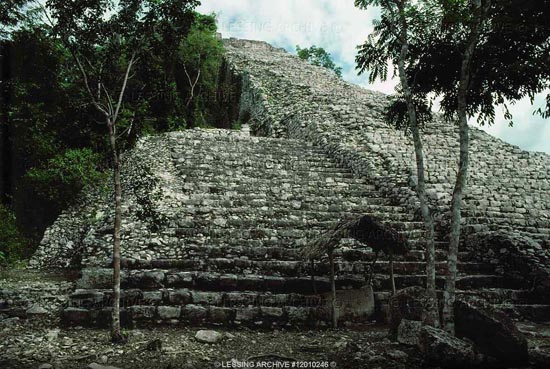
New temples were built and old ones kept in repair until at least the 14th century however, perhaps as late as the arrival of the Spanish. Coba contains several large temple pyramids, Nohoch Mul is the tallest pyramid in the Yucatan peninsula. It is 12 stories tall and has 120 steps to the top, about 42 meters (138 ft) high. Today only a small portion of the site has been cleared from the jungle and restored by archaeologists. But from the top you can view a magnificent span of jungle with the tops of other ruins reaching above the jungle canopy.
Kabah-Yucatan, Mexico:
Located 18 km from Uxmal, Kabah was at its peak from 800 to 900 AD. Kabah represents the second largest ruin city in the region named Puuc in the Yucatan Peninsula. The structure at Kabah that is best known is the Palace of the Masks which has a facade covered in hundreds of stone masks of the rain god Chaac and fine examples of the Maya vault.
Hotels in the region:
Check availability, maps, photos and reviews before traveling, and book at the guaranteed lowest price.
Villa Arqueologica Uxmal 
Category: 3Star
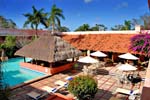 Country: Surrounded by magnificent Mayan ruins in Uxmal, Mexico,
Country: Surrounded by magnificent Mayan ruins in Uxmal, Mexico,
Location :in the heart of a UNESCO World Heritage Site.
Rate: start US$ 58.31
Hotel Rooms: 43.
Chan-Kah Resort Village 
Category:4Star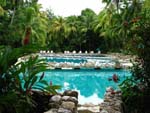
Country: in Mexico,
Location:Located in a jungle setting in Palenque,
,Rate: start US$ 88
Hotel Rooms: 80
Gran Melia Cancun 
Country in Yucatan,Mexico
Location: 30 minutes from downtown Cancun.
Rate: start US$ 99
Hotel Rooms:678. Hotel Chain: Meliá Hotels & Resorts.






